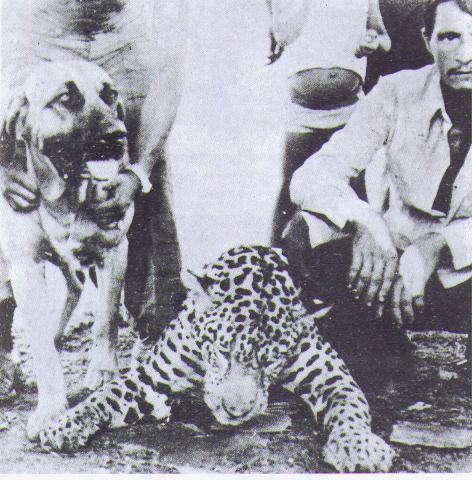History

The fila is the national dog of Brazil and has been bred for over 400 years. It is a breed created by necessity and nature. The fila's origin is not a deliberately programmed one. Their formation is the result of a relatively long process, with natural selection acting intensely to eliminate the weak and least suited. Farmers also affected reproduction by maintaining only animals suited for work on the farm.
Origen theories are unclear but it is most likely that the breed arose in the interior of Minas Gerais as a result of natural selection both in the wild / semi-wild and on "fazendas", where they were valued strictly for their work value. Their origen can best be summarized by the phrase, "In Minas Gerais there were many canine species; God saw them, removed them with his finger, and so was born the fila brasileiro".
Brazil was discovered in 1500. In 1630 the East Indies company sent a fleet which conquered Pernambuco. In the 17th century "bandeirantes" discovered gold in Minas Gerais. Cattle farming arose to sustain the population. The filas were used to control the livestock, and protect them from jaguars and other predators. In colonial times filas were used to track down and hunt indians who were doomed to slavery. They were also used to trail and apprehend runaway slaves, and they accompanied explorers on their expeditions into the wildernss. Slavery was abolished in 1888 and function of the fila was relegated to that of cattle herder, hunter and guard. These dogs were found throughout the entire state of Minas Gerais, in Goias, and what is now known as Mato Grosso do Sul.

Filas were exhibited in 1939 and written about in 1942. They were described as:
* excellent guardians
* having blind dedication
* used to hunt indians and slaves
* rarely barking
* showing courage when attacking - knocking them down and dominating them, harming them only when there is resistance
* learns to work cattle easily
* resistant on long journeys
* affectionate with the family and children
Their physical appearance was described as:
* similar to lions
* large head
* round head
* voluminous thorax
* muscled shoulders
* strong thighs
* huge legs
* retracted abdomen
* short hair
* loose skin
* flexible and imposing feline movement
* predominant color is that of dark sand but there are also brindles and light sand colors
* nose and lips are black
* tail should be long and slightly curved

In the 1940's Paulo Santos Cruz in search of a protection dog encountered the breed and obtained breeding stock in "fazendas" throughout Minas Gerais. He became the "Father of the Breed" and wrote the breed standard.
The official standard for the breed was recognized by CBKC in 1946 and by the FCI in 1968. Extensive crossbreeding occurred in the 1970's in an attempt to decrease the intensity of the temperament and produce larger animals. The BKC also closed the "initial registry".
CAFIB is an acronym for "Club for the Advancement / Improvement of the Fila Brasileiro". CAFIB was founded on March 18,1978. On April 28,1980 the Brazilian ministry of agriculture designated CAFIB as the only entity responsible for the genetic registry of the fila brasileiro in all of Brazil. This was later changed.
The club created an initial registry to register pure filas. They also conduct phenotype and temperament analysis. At the phenotype and temperament analysis every dog's picture is taken and he / she is measured, weighed and judged from 27 positions. Finally a temperament test is administered. Only dogs that have a phenotype and temperament analysis can be used for breeding. Litters registered by CAFIB must undergo a rigorous and extensive examination process.

This page was made possible due to the knowledge and experiences of many friends in Minas Gerais and throughout Brazil; and the WONDERFUL work by Ines van Damme, "El Gran Libro del Fila Brasileno".
Contact:
Poco da Onca Kennels
Jesus M. Llano
(305) 836-6823